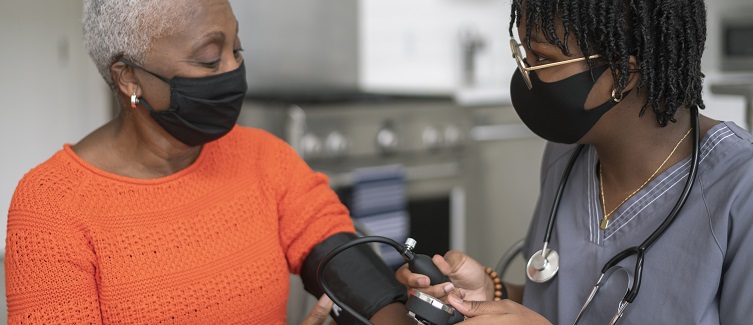A vascular screening is a check-up for your arteries and veins, also called your blood vessels. These appointments can help you find out if you have vascular disease.
Not all vascular conditions have symptoms, so it’s a good idea to make the time for a check-up to be sure that your blood vessels are healthy. Knowing if you have a health problem can help you treat it and enjoy your everyday activities with peace of mind.
Never Miss a Beat!
Subscribe to Our HealthBeat Newsletter!
Thank you for subscribing!
You can now select the specific newsletters you'd like to receive.
You are already subscribed.
Subscribe to more newsletters in our email preference center.
Sorry, an error occurred. Please try again later.
Get Healthy Tips Sent to Your Phone!
What Happens During a Screening?
Healthy blood vessels are smooth, stretchy, and allow blood to flow through them easily. Vascular disease can cause weak spots in your blood vessels, or for them to become narrow or blocked.
During a vascular screening, you will undergo a set of painless tests that check your blood vessels to judge if they are healthy, or if they have signs of disease. Vascular screenings are provided by specially trained technicians, also called technologists, under the direction of vascular surgeons.
Abdominal ultrasound
An abdominal ultrasound checks for abdominal aortic aneurysm, a weak, bulging spot in the largest artery in your abdomen. During this test, you lie flat on your back and have images and measurements of your abdominal aorta taken through ultrasound.
If left untreated, an aneurysm can burst, causing life-threatening internal bleeding.
Carotid artery ultrasound
A carotid artery ultrasound checks the arteries in your neck, which carry blood to your brain. During this test, you lay flat on your back and have images of your carotid arteries taken through ultrasound. This test also checks how quickly your blood flows through your carotid arteries to see if they are narrowed.
If left untreated, blocked carotid arteries can cause a stroke.
Ankle-brachial index (ABI)
An ankle-brachial index (ABI) test checks if you have signs of peripheral artery disease, or PAD. During this test, your blood pressure is measured in both of your arms and both of your ankles, then compared. If your blood pressure is lower in your ankles than in your arms, you may have PAD, or blockages in the arteries in your limbs and pelvis.
If left untreated, PAD can cause pain, difficulty walking, and serious damage that may lead to limb loss.
RELATED: What is Vascular Disease?
Why Do I Need a Screening?
A screening can help you find out if you have signs of vascular disease, and if you are at risk for having it in the future. Early diagnosis and treatment can help you avoid dangerous, life-threatening problems.
It is a good idea to have a screening if you:
- Are 60 or older
- Have diabetes
- Smoke
- Have high blood pressure
- Have a family history of cardiovascular disease or aortic aneurysm
To learn more about vascular screenings or to schedule a screening, visit the UPMC Heart and Vascular Institute online or call 412-802-3333.
Editor's Note: This article was originally published on , and was last reviewed on .
About Heart and Vascular Institute
The UPMC Heart and Vascular Institute has long been a leader in cardiovascular care, with a rich history in clinical research and innovation. As one of the first heart transplant centers in the country and as the developer of one of the first heart-assist devices, UPMC has contributed to advancing the field of cardiovascular medicine. We strive to provide the most advanced, cutting-edge care for our patients, treating both common and complex conditions. We also offer services that seek to improve the health of our communities, including heart screenings, free clinics, and heart health education. Find an expert near you.
